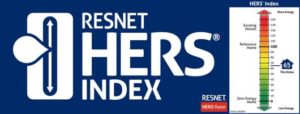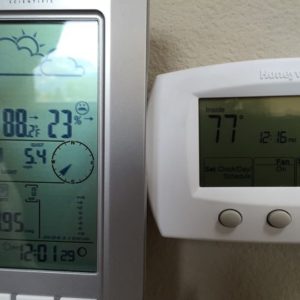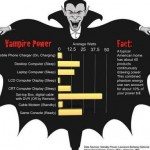
The only rating currently offering quantifiable and comparable insight for a homeowner/buyer regarding monthly utility costs is the Home Energy Rating System, most often referred to as the HERS Index. A HERS Rating number is like a MPG rating on your car, except a lower score is better. Although we understand that the way we drive our cars might affect the gas mileage, the MPG sets a standard of the performance we can expect from the vehicle. The standards for MPG tests are the same for every make and model of car made and although they are performed by the manufacturer, all test results are sent to the EPA which reviews the results and confirms about 10%–15% of them through their own tests at the National Vehicles and Fuel Emissions Laboratory. We, as a nation, have come to trust in the MPG number to help us make more informed choices before buying a vehicle. That number does not tell us what to anticipate for maintenance costs, how well the car is built or how many miles a particular vehicle will last, but when we buy a car, we look to that MPG number to help us understand what our operating costs will be relative to other choices. We’ve come to rely so heavily on that number, that when news broke recently that Volkswagon cheated on the tests, the company reported the first quarterly loss in over 15 years.
So isn’t it just natural that we would want a similar rating to know just how well we can expect our homes to perform compared to other homes we might be looking to purchase?
The Energy Code used here in Northern Nevada is the International Energy Conservation Code (IECC). Within the 2015 IECC, the HERS rating was offered as an option for builders to prove that their new homes meet certain efficiency criteria and consumers can easily compare the numbers, just as we do with MPG numbers. Currently, the City of Reno, the City of Sparks, and Washoe County, where we live and have been building custom homes for over 20 years, has been using the 2012 IECC for general building standards, but gave builders a temporary pass on the more stringent 2012 Energy Code by allowing them to continue following 2009 IECC Energy Code standards.
On May 10th, the Washoe County Commission approved the 2012 IECC with the HERS option from the 2015 IECC. This new standard will go into effect for all homes that receive a building permit after July 1, 2016. Almost all other building departments in Northern Nevada will be instituting the new code criteria this summer.
The energy report builders currently use to meet code requirements is “pass” or “fail”. The home buyer or owner only knows that a home meets the current code, but it does not provide a way to compare homes for potential energy expenses. The current sy stem does not help the appraiser to assign value to homes that show an above average ability to minimize the use of non-renewable fuel sources or those that maximize the value of renewable fuel sources such as solar, wind, or geothermal. That pass/fail criteria will continue be an option for the foreseeable future. Hopefully, production builders such as Lennar, Tanamera, Centex and Toll Brothers will exercise their ability to use the new HERS option and give consumers quantifiable information regarding the energy efficiency of each individual home.
stem does not help the appraiser to assign value to homes that show an above average ability to minimize the use of non-renewable fuel sources or those that maximize the value of renewable fuel sources such as solar, wind, or geothermal. That pass/fail criteria will continue be an option for the foreseeable future. Hopefully, production builders such as Lennar, Tanamera, Centex and Toll Brothers will exercise their ability to use the new HERS option and give consumers quantifiable information regarding the energy efficiency of each individual home.
The HERS index national average is 63. The inter-agency code review committee set that national average as the new standard for homes in Northern Nevada as a criterion to meet the new code requirements. This is a baby step that has potential to become big resource for consumers who what to know more about how their “biggest purchase of a lifetime” stacks up against other homes in their area.
In areas where the HERS Rating is common practice, consumers can refer to Zillow and/or the Multiple Listing Service (MLS) to compare homes by the numbers!
By living in our hyper-efficient Haven™ home by Envirohaven®, we not only find that we have more disposable income, we also find that we have increased our level of comfort during seasonably warm and cold months. Efficiency translates to a high level of intrinsic value as well as cash savings.
Now that we have the tool in place to “grade” our homes on energy efficiency, it’s time for lenders to use this number as a part of their value assessment. If you agree, help change the current system by telling your realtors, mortgage brokers, friends and family that this issue is important to you by sharing this post.





You must be logged in to post a comment.